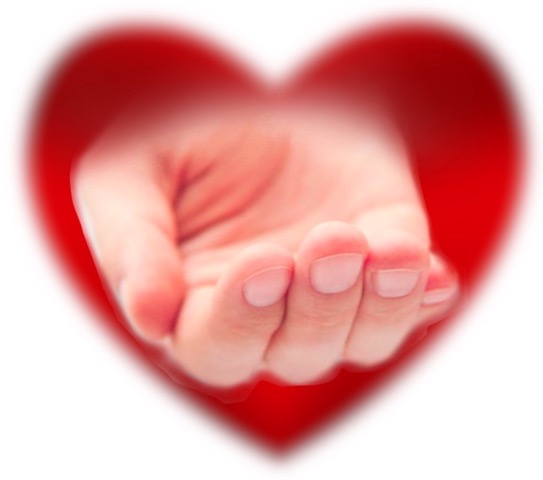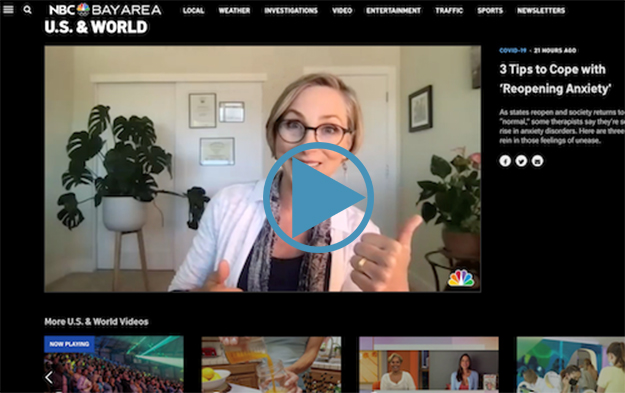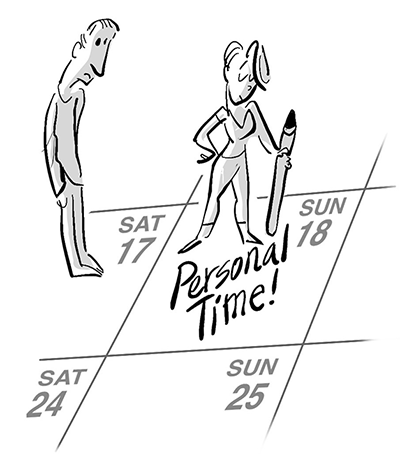Aug 19, 2022 | Anxiety, Control, Easygoing, Meditation, Over Responsibility
What is the Difference Between Caring for and Controlling our Loved Ones?

My client, whom I will call Trish, has an adult daughter, Dawn, who is overweight and at risk of developing diabetes. As a loving mother, Trish is naturally worried. She knows that if Dawn had a better diet, she would be healthier and happier, which is what Dawn says she wants. Watching Dawn eat fast food and empty-calorie snacks is upsetting, and Trish shows her displeasure with subtle comments like, “I wonder how many grams of sugar are in that?” When Trish has Dawn for dinner and her daughter asks for a second serving of dessert, Trish will ask, “Why don’t you wait a few minutes and see if you’re still hungry?” She does other things like sending Dawn articles on healthy diets and diabetes prevention. She cares deeply about her daughter and wants her to be healthy and happy. But what she’s doing isn’t helping.
Caring Versus Control
Imagine that your hand is an open heart. It reaches out to the other person, palm open. This is caring, open, tenderhearted, and compassionate. You can offer help, but your hand is open, so you let go of the outcomes. They may take in what you say, they may ignore it, or they may reject it. Caring is trusting that the person you love is in charge of their own life and their happiness and health are based on the choices they make for themselves. When we care for someone, they usually feel loved and supported.
When we care for someone, they usually feel loved and supported.
Now imagine your hand is a tight fist, your reach out to the other person, grasping on to them, trying to fix them, attaching to what they do or don’t do. Your fist represents you trying to protect your heart just as you are trying to protect them. This is controlling. When we control someone, they usually feel judged and defensive.
When we control someone, they usually feel judged and defensive.
The Courage to Care
When we care deeply for someone, we will feel fear; this is inevitable. We want them to be happy and free from suffering. We become frightened when we see them do something that may cause pain. This fear presents a fork in the road; we can go down the path of caring or the path of control. If we choose the path of caring, we keep our hearts open. To care, we must be willing to allow our hearts to break, which takes tremendous courage.
On the other hand, control is an attempt to keep our hearts from breaking. We try to get the other person to make the right choice, so we don’t have to feel the pain of their suffering. But the truth is, we are not in control of others. It is hard enough to make choices that support our own health and happiness and impossible to do so for others. Either way, we will experience heartbreak in the end, and in the process, we often alienate the ones we love.
3-Steps to keep your heart open.
Trish chose the path of caring for her daughter.
The first step was identifying her values and what she was aiming at. She chose Peace, Connection, and Acceptance.
Second, I had her identify the mindsets that would support a caring stance. She came up with:
“It is more important to enjoy my precious time with my daughter than trying to control what she eats; this gets in the way of my relationship.”
“She already knows what I think, this might influence her choices at some point, but I can’t control what will happen.”
Third, she needed to accept that anxiety she felt as something to be allowed rather than acted out on.
I made Trish a meditation to help her allow her anxiety. If this is something you struggle with, click on either the video below or this link to listen to a 5-minute meditation that will help you keep an open heart with the ones you love.
Nov 23, 2021 | Anxiety, Easygoing, Holidays, Over Responsibility, Social Anxiety
Coping with Difficult People This Holiday Season

This is what my client Andi told me this week. Like so many others, she is very grateful that she will be able to get together with family and friends for the holidays this year. Last year had its own set of stressors, but it had fewer frictions that naturally occur during holiday get-togethers. Whether it’s friends or family, there are always people who rub us the wrong way.
What triggered Andi was when her mother suggested how Andi could do things just a little bit better. These suggestions were particularly distressing when it came to her parenting. Just this week, when her mother was over for dinner and her son was having a meltdown, her mother said, “When you did that, I would put you right in your room!.” At that moment, Andi felt like putting her mom in her room, not her son. Instead, she snapped at her mom, telling her she did not want to hear it. Her mom looked hurt. Andi felt even worse, thinking she was not a good enough mom or daughter.
Andi’s goal for therapy was to be more patient, loving, and compassionate with her mother at Christmas. These are beautiful goals, but they are not realistic. The gap between how we think we should feel and act and how we do, causes more stress, shame, and blame. We cannot just will ourselves not feel triggered by friends and relatives. But we can learn to respond to our triggers differently.
Expect and Accept you will get triggered. It helps to realize that it is normal to get activated. When we expect this to happen, we position ourselves to respond to our triggers differently.
Learn to relax rather than react to your triggers. When we get triggered, our bodies contract, and we tense up. By practicing labeling our feelings and training ourselves to relax our bodies, we become much less reactive.
Rehearse ahead of time. A powerful tool we use in cognitive behavioral therapy is called imaginal exposure. By picturing upsetting situations, we can generate similar feelings and sensations when they are happening in real-time. By practicing relaxation during an imaginal exposure, you are much more likely to remember to use them at your next get-together.
Listen to this imaginal practice at least one time before your next planned gathering. Be patient, loving, and compassionate towards yourself! Becoming less reactive takes time.
Jun 11, 2021 | Anxiety, Easygoing, Fear

Two days ago, I was checking my e-mail and one of the subject lines jumped off my screen. Interview Request From NBC News. It was the real deal, Fernando Hurtado, a reporter for NBC was doing a story on the anxiety many people are experiencing when returning to “normal” post lockdown life. My first reaction was excitement. Yes, I thought, I want to do this! But as I began writing a reply, my perfectionism started to take hold. In an interview with this big news organization, I have to appear confident, I have to say all the right things, and I can’t make any mistakes! Now I felt so anxious that I was wasn’t sure that I wanted to do the interview.
True Values Defined
Then I remembered to check in with my values. I asked myself, Why would I want to do this interview? To prove myself? Impress other people? But those didn’t ring true. The motive I had for doing the interview was to share what I know about anxiety, and help people get back to normal, to live life more fully. Knowing my real motivation gave me confidence, and perspective on how to proceed. I spent about an hour outlining my thoughts, and because I also value my own time and mental health, I made a point to stop and not give in to the urge to over prepare.
The next morning was the interview and I felt anxious. My heart was beating fast, my stomach felt nervous. But I knew these feelings were not a sign that something was wrong. They were telling me that I was on the right path, taking a risk and putting myself out there, moving in the direction of my values.
Grading My Effort
After I finished the interview, I slipped into another perfectionist habit, ruminating over what I could have done better. I had just taken a step forward, but instead of feeling pride, I felt embarrassed. But I caught myself and reminded myself that I didn’t over prepare, I spoke my truth, and any mistakes I made just mean I’m human. Yay! I thought, I get an A plus! Then I literally kissed my own hand!
The icing on the cake was that when I finally saw the piece, I knew that people will actually find it helpful. Which makes me feel grateful and proud.
You can see the NBC piece by clicking here!
Sep 2, 2019 | Easygoing, Monkey Mind, Over Responsibility

I love a day alone at home. I can tune into myself, find my own rhythm without any sense of obligation or accountability to anyone but me. Personal time at home is something I need. It doesn’t happen as often as I like because my husband works primarily from home, but last weekend Doug was scheduled for a job that would take him away. I’d have all of Sunday to myself. I’d been looking forward to it all week—secretly, because if Doug knew just how much I cherish my time to myself, I thought it would hurt his feelings.
We had a lovely Saturday together and we were feeling close. Then that evening Doug realized he’d been mistaken, he wouldn’t be flying out until Monday. Now we could do something together, he reported cheerfully.
UGGGGGH!, My day to myself was snatched away! I couldn’t have hidden my disappointment if I tried. The intimacy we’d been feeling vanished, replaced by a mutual disappointment with each other. I was disappointed with the loss of my personal day, and resentful of Doug for his mistake. Doug was disappointed that I didn’t want him around. He said he would spend as much time away on Sunday as possible to give me time to myself. He didn’t complain, but to me, he looked sad and dejected. And that wasn’t the kind of personal time I wanted, nor the way I wanted to get it.
Instead of enjoying my personal private Sunday, I was haunted by a whole bunch of yucky thoughts and feelings—disappointed that I was not going to get the day I had envisioned, guilty that Doug’s feelings were hurt by my disappointment, angry that I “never” get much time to myself, anxious that this conflict made me feel separate and alone, and confused, wondering if my desire for alone time was reasonable or not. Was I to blame for Doug’s hurt feelings? Was it selfish of me? Or was it his fault for messing up his schedule and for failing to give me enough space?
Despite my raw feelings and confusion, I knew in my heart that when we blame ourselves for our desires, or blame others for getting in the way of our desires, we are assuming the stance of victim, a powerless position from which personal growth is impossible. I knew that wasn’t me. I didn’t want to merely survive this Sunday, I wanted to reclaim it. But how?
I had a strong urge to try to retreat. I could apologize, and find something we could do together to bring back a feeling of connection. But was that an any better answer to the dilemma than laying blame? Where was my urge to fix things coming from? Was it from an expansive and loving place or was it fear of losing connection?
The answer, I knew, was fear. Instead of trying to smooth things over, I committed myself to move towards my values of honesty, my own health and happiness, and courage to stick with my alone time even though it may be hurting him. This was my personal responsibility to myself. That Sunday turned into a day of practice. I practiced saying what I wanted. I practiced allowing my feelings of guilt and anxiety and anger to wash through me without acting out by accommodating Doug or blaming him. I practiced my expansive mindset, reminding myself that If Doug is upset with me, it does not mean I have done something wrong. He has a right to his feelings, and I have a right to mine. And I practiced honoring my higher values of Self-Acceptance, Authenticity and Courage.
Last Sunday was not the day I had been looking forward to all week, a precious day of personal time. But in retrospect, it may have been something more precious. A day of personal growth.
May 3, 2019 | Control, Easygoing

Illustration by Doug Shannon
As many of you know, my greatest goal in life is to become more easygoing, to honor the values of flexibility, humor and compassion. But there are many forks on my trail toward that goal. Sometimes I don’t see the fork until I’ve taken the wrong path, and I’m lost in the woods. Here’s a great instance of how that happens.
Last night we were having guests over for dinner and I wanted to make coconut ice cream for dessert. It is relatively easy and healthy and tastes great, but when I looked in my cupboard, I was out of coconut milk. My husband Doug cheerfully volunteered to walk over to the market and pick some up. I was wary. Grocery shopping is my domain, and there have been incidents in the past where I have given him a list of things to pick up, and found the list forgotten on the counter, and he either forgot what I wanted or got the wrong thing. It happened with coconut milk in fact; once I asked him to get coconut milk and he brought home coconut water. But I thought, Surely he learned from that mistake. I sent him off to the store and started gathering the other ingredients to prepare. Ten minutes later Doug returned with a small can of condensed coconut milk. “I not sure this is exactly what you wanted,” he said, “but this is all they had.”
I groaned aloud. I knew it wasn’t all they had. Somewhere in my head a voice was screaming, I can’t depend on my husband for anything!! Suddenly I was at a fork, feeling the pull of the wrong path, the one that leads away from easygoing. It felt like my husband’s failure to get what I wanted was pulling me off track. But that was the catalyst, not the cause. The path that was beckoning me was the one blazed by my monkey mind, guided by these two assumptions:
- To have a successful evening with guests, I need to have a nice complete meal, ie. coconut ice cream for dessert.
- If I want things to be done well, I have to do them myself. I am in this alone.
I had a decision to make. I could act on my impulses, follow the monkey until the situation was corrected, in other words, go to the store myself. Or I could accept what was happening and keep moving on my chosen path toward my goal. And that would take a lot more work!
To stay on my chosen path I had to feel the loss of what I wanted, the anxiety about what would be an imperfect meal, and feel my anger at my husband. So I opened my palms and breathed those feelings in. I reminded myself of the mindset I was after:
- The more I let go of my dinner being perfect, the more present and relaxed I will be with my guests.
- While my husband sometimes misses details that feel important to me, I can count on him for things that are
I can’t say that I felt all easy going and at peace, but I am proud of myself for noticing the fork and staying on my path. I don’t know whether I could have done that a few years ago. Every situation where I can see the fork and make a conscious decision is progress! And there will be plenty of forks in the future where I’ll have a chance to practice with these same mindsets and emotions. In fact, I just noticed that we’re out of that special kind of almond milk coffee creamer I like. Should I ask Doug to pick some up?
Apr 1, 2019 | Easygoing, Perfectionism

It was 11:30 am and I was halfway through my list of to-do’s. But when I saw what was next on the list, a Quicken session— I was three months behind— I hesitated. My impulse was I have to get this done! But while I like getting things done, I also want to cultivate more creativity, vibrancy and pleasure in my life. So, I decided to postpone balancing my budget, and to indulge myself with a fun project instead. I decided to learn how to fold a fitted sheet.
I know this sounds a little crazy but I’m one of those people who actually love doing laundry. The smell of the clean clothes, the heat taking them out of the dryer and folding them all feels very satisfying to me, as does the accomplishment of getting a little task done. But I am 59 years old, and I have never learned how to fold a fitted sheet. I was pretty sure there would be a lot of instructional videos on YouTube that would teach me the art of folding a fitted sheet. I was right!
I found a two-minute video that promised to teach me in four simple steps. I felt my excitement rising. It was posted by a woman about my age and I thought I could definitely learn from her. But thirty seconds in, I was floundering. She said to hold the two corners of the sheet length-wise with the right side facing me. Then she said to take the long end and fold the right corner over the left, then go down the width of the sheet and fold the third corner into the two corners already folded. What??? And damn, she really moves fast for a lady my age! I watched the video eight times, and still did not get it.
Arggggh! So, I found another video with the same simple promise. I watched it six times and I still could not do it. I tried a third video. Still baffled. So, I returned to the first one again. But I was still mystified and my frustration was building. I had thought this fun project would take thirty minutes tops and then I would have lunch. But I was too stubborn to quit.
Finally, after an hour I was actually able to do it. I wasn’t sure how I got there but I was holding in my trembling hands a pretty near perfect folded freaking fitted sheet! Exhausted and irritable, I went downstairs and had lunch. As my headache resided and my blood sugar returned to normal, I wondered, how did I manage to turn something that was supposed to be fun into such a stressful experience?
I retraced my steps. (No, I don’t mean the steps to fold a fitted sheet. I probably wouldn’t be able to replicate those!) How did I approach the task? I had an end goal in mind, that beautifully folded sheet. I assumed it would go smoothly and only take me 30 minutes and that it would be fun. I doggedly persisted, ignoring my hunger and frustration. Hmmmm. All of this sounded familiar to me. This is how I approach much of life, and it is this approach that causes me stress and gets in the way of what I am really after—creativity, vibrancy and pleasure.
After this reflection and having my lunch, I decided to approach the task that I had been avoiding, reviewing my finances on Quicken and paying bills. I made a plan, instead of focusing on the end point—getting it done—I would limit myself to 30 minutes. Whenever I encountered frustration, I would see this as part of the process and I would breath into the feeling, making room for it.
I sat down and set the timer for 30 minutes. I opened Quicken and when I tried to upload my bank accounts, the password wouldn’t work. My chest tightened and my breathing became shallow. Good, I said to myself, this is an opportunity to practice welcoming negative emotions. After ten minutes of trouble shooting, I got access to my account. When my timer went off, I had only balanced one month of the three months I was behind. I was sorely tempted to keep going, but I stuck with my plan. After I shut down my computer I patted myself on the back for approaching the task differently. I noticed feeling more relaxed.
It is my intention to break myself of the habit of prioritizing completion of every task. My life is about more than getting from point A to point B. The ultimate point B is death, where we all end up. I want to enjoy the process, whether or not I ever figure out how to fold a freaking fitted sheet again!








Recent Comments